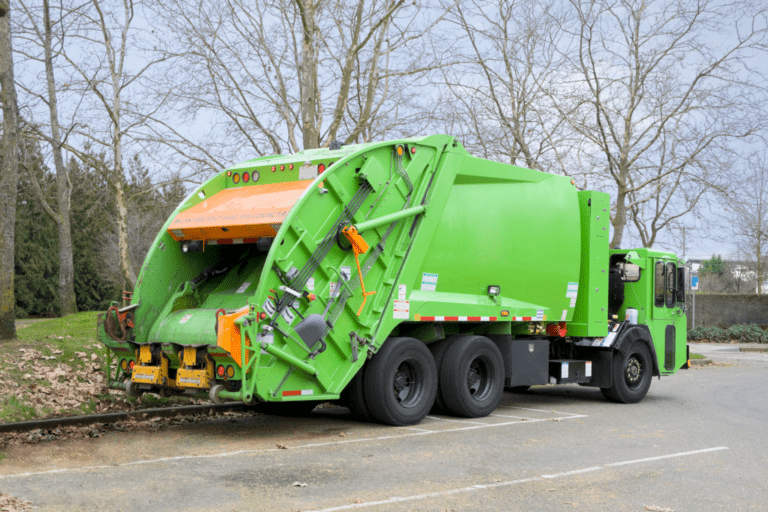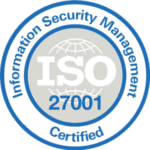
A CDL pre-trip vehicle inspection is one of the most important things a driver can do to ensure that their vehicle is safe on the road. Of course time is money, and every minute that you’re not back on the road you’re potentially losing money. That’s why it’s imperative you create a vehicle inspection process that can be done efficiently.
You need a repeatable process that enables you to check your vehicle quickly but thoroughly, make sure that it’s road-ready, and gets you back on the road as soon as possible. With that in mind below are seven tips to passing a CDL pre-trip vehicle inspection.
-
Download and use DVIR software on your smartphone that allows you optimize the process of doing a CDL Pre-Trip Vehicle Inspection with ease. We may be biased, but we recommend the Whip Around™ app.
-
Have a predetermined set of things to look for in your inspection so that you can do it quickly and effectively every time.
-
Document everything with photos and keep thorough records to avoid tickets/fines.
-
Check your vehicle every 24 hours, with every shift change, and/or when picking up new equipment to catch small problems before they become big and costly ones.
-
Keep your boss/fleet manager in the loop as to what’s going on with your vehicle at all times so that faults can be fixed quickly.
-
Repair the faults that compromise the safety of the vehicle prior to your departure. Also be sure to schedule maintenance for and/or keep an eye on things that may need to be repaired/replaced in the near future.
-
Keep up with Federal Motor Carrier Safety Administration (FMCSA) regulations so you’re always certain you know what it takes to be compliant.
1. Download the Whip Around App
Whip Around is the driver vehicle inspection report software that has changed the game when it comes to the CDL Pre-Trip Inspection. The application is available for both Android and iOS phones, and comes with everything you need to create a thorough and well documented vehicle report.
Download the app for free, enter some simple information as well as your license plate, and voila! You have a paperless system at the ready at all times to keep records about the status of your commercial vehicle. Just a few of the features of Whip Around include:
-
Mobile checklists to keep track of what’s working, what’s not, and what needs immediate attention.
-
The ability to take photos of worn and broken elements of your vehicle such as broken windshields and burned out taillights and headlights.
-
Automatic syncing between your smartphone and the web based dashboard, so that you and your fleet manager will always know the status of your vehicle.
With Whip Around in your pocket, you’ll always have a documented report of your vehicle, and the ability to make a new report whenever you want to.
2. Streamline the CDL pre-trip inspection process

When you have a checklist that you can use every time you need to do a pre-trip inspection, you can do it faster without worrying whether or not you missed something. Not only does Whip Around have a 12 step form preloaded in the freemium account, you can upgrade to the Premium Plan and add custom elements to your checklist.
WHAT KINDS OF THINGS SHOULD YOU BE LOOKING FOR IN YOUR PRE-TRIP INSPECTION PROCESS?
The freemium account of Whip Around includes an inspection checklist for the following:
-
Windshield, windshield wipers, sun visor and mirror:
-
Do your wipers work correctly?
-
Is the windshield clean and not cracked?
-
Are the wiper blades damaged?
-
Is the washer fluid container full?
-
Do the windshield washers work correctly?
-
-
Lights and indicators
-
Are all lights work correctly including your hazard lights?
-
Are the lenses clean and not cracked?
-
-
Left and Right wheels and tires (note: in the app there are two separate sections for the left and right wheels and tires. This allows you to assess one side of the vehicle completely before moving to the other side instead of bouncing around.)
-
Are the tires on both sides of the vehicle correctly inflated and not damaged?
-
Are the wheel nuts tightened?
-
Is there any damage to the wheels?
-
Do you see cuts or bulges in the tire sidewalls?
-
Is the tread path adequate?
-
-
Left and Right Fluid leaks (note: again, there are two separate sections for the right and left side of the vehicle in the app)
-
Do you notice any fluid leaks on the right or left side of the vehicles from the engine, fuel system or waste water tank?
-
-
Reflectors, toe coupling, tail lights, indicators and air hoses
-
Is everything fitted, working, clean and not damaged?
-
-
Doors and seat belts
-
Do all doors open and close fully?
-
Is a fire extinguisher present, serviced and ready for use?
-
Are all seat belts working correctly
-
-
Horn and Speedometer
-
Does the horn work correctly?
-
Is the speedometer working correctly?
-
-
What is your current mileage?
-
Final check for road readiness of the vehicle:
-
Steering for excessive free movement
-
No apparent air leaks from breaks
-
All switches and warning lines operate correctly
-
Sufficient fuel to complete trip
-
-
The end of the 12 step form also includes a space for the signature of the driver that inspected the vehicle. An unsigned inspection report can be grounds for a ticket/fine. Speaking of fines…
3. Keep Records – Avoid Fines
If you get a random inspection at a weigh station, or are pulled over for any reason and cause is found to do a random inspection, it’s imperative you have documentation for any faults that may be found. The phrase “I didn’t know” simply won’t save you, unfortunately.
In the event that the random inspection results in finding faults you don’t have documentation for, a few things can happen —
-
You could get a fine
-
You might be ordered to have it repaired before you can continue on your trip
-
You could get a fine, and be ordered to have it repaired
-
Your vehicle could be placed out of service and require towing to the nearest repair shop, and again you could get a fine.
This is why doing the CDL pre-trip vehicle inspection is so important. You need to be able to find and repair faults quickly, and/or have documentation related to faults that aren’t quite necessary to repair just yet.
WHAT CAN WARRANT A ROADSIDE INSPECTION?
Some states spot check CDL vehicles at weigh stations, others will do an inspection if they pull you over for moving violations.
At weigh stations, the DOT doesn’t necessarily have time to thoroughly inspect every truck that comes through, however you should always be ready for one. According to FleetOwner.com, “a tidy cab can often mean ‘move along,’” and you won’t have a thorough inspection.
Therefore, it’s a good idea to keep your cab tidy at all times. Fleet Owner also suggests having a pleasant attitude, and making sure your documents are easily accessible to that they’re easy to inspect.
Trucker Insider says that there are six levels to a roadside inspection with level one being the most thorough, complete with the DOT inspector crawling “underneath, over, onto and through (you get the point) of your vehicle.”
Levels two through five are varying degrees of thoroughness, and level six “is reserved for those that haul transuranic waste and Highway rout[e] controlled quantities of radioactive material.”
If you are pulled over for speeding or any other roadway violation, you could face a roadside inspection of your CDL vehicle as well. For this reason alone, it’s a good idea to obey speed limits and follow the other rules of the road so you can stay on the road, and stick to your driving schedule.
WHAT SHOULD YOU DO IF YOU’RE CHOSEN FOR A ROADSIDE INSPECTION?
-
Stay calm
-
Be pleasant
-
Answer any and all questions to the best of your ability
-
Hand over all requested documentation
Hopefully no violations will be found, and you’ll be back on the road quickly and painlessly.
4. Catch Small Problems Before They Become Big Problems

Did you know that a small crack in a windshield can turn into a large crack or even a completely shattered windshield while driving on the road? Hitting a pothole or a big bump in the road could result in you needing the windshield completely replaced if you don’t repair small cracks as soon as you notice them.
The same can be said for other small problems — they can all turn into bigger and much more expensive ones. For example, a leaky hose left unrepaired could drain your windshield washer fluid, or worse your brake fluid! That can get expensive real fast.
Consider for a moment the legal troubles you could also face if you didn’t ensure the wheel nuts were tightened, and then a wheel came loose and hit another motorist on the road. Though this may seem unlikely, it’s better to ensure the safety of your vehicle not just for yourself, but for other drivers you will be sharing the road with.
While it’s true that some things can wear and tear a while before needing to be replaced, it’s a good idea to keep documentation on any and all faults of your vehicle so that you can track the urgency for the repairs and replacements of those faults.
5. Give Fleet Managers Your Reports
A good manager is an informed one. With Whip Around, fleet managers will always know the status of the vehicles in their fleet. As soon as a driver completes their CDL pre-inspection report, they can instantly sign it and send it. It will then automatically sync from their smartphone to the fleet manager’s web based dashboard.
This ensures that the fleet manager will always be kept in the loop as to whether or not the vehicles in their fleet need repairing, and will also give them up to date analytics so they can track if there is a sudden uptick in repairs and issues.
6. Repair What You Can ASAP, and Schedule the Rest
It’s critical that you repair the faults that compromise the safety of the vehicle prior to your departure for a trip. Though it can be frustrating to delay a trip due to repairs, it’s better to be safe than sorry. Simply putting it off until the next day or even the next trip could be the difference between getting a fine during a spot inspection from the DOT, and having a trip free of hassles. Delaying your repairs in the worst case scenario could be the difference of getting into an accident and your safe return home.
You or your fleet manager should schedule regular maintenance for your vehicle as well. Things like oil changes, wheel alignment, keeping your fluids full (wiper fluid, power steering, coolant, etc…), air filters, batteries, and so on are important for both safety and comfort. The better condition your vehicle is kept in, the less likely you are to experience down time, and as a result, loss of income.
7. Stay Up to Date With FMCSA Regulations
Do you know what the current FMCSA regulations are for drivers? If you’ve been a driver for a while, it may have been months or even years since you last studied the FMCSA manual. Even if you’re not going to be taking a test again any time soon, it’s important that you keep up to date with all FMCSA regulations so you’re always certain you know what it takes to be compliant.
It may be a good idea to have education days regularly to ensure that you and your fleet are up to date on the latest rules. It’s better to know the law and avoid a fine, than try and argue your way out of a ticket for non compliance. If your fleet manager isn’t interested in education days, you can always search the FMCSA website on your own to keep yourself educated on the rules.
Ready to Try Whip Around?

If you have been looking for reliable a DVIR software-solution, perhaps it’s time to give Whip Around a try. We’re confident you’ll be impressed with just how quickly you can inspect your vehicles to ensure they are safe and road-ready.
Learn more about pricing and create your free account today! We look forward to making your CDL Pre-Trip Inspection process a little easier on your company and its employees.









